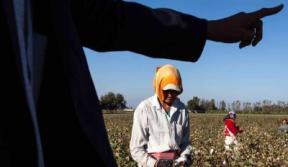Children produce goods from tobacco to lipstick to electronics.
Many of these children work in hazardous conditions. The world agrees this should stop, yet it persists.
There is international consensus that child labor is a violation of labor rights and human rights, and three widely-ratified international conventions – ILO Minimum Age Convention (No. 138), ILO Worst Forms of Child Labor Convention (No. 182), and the U.N. Convention on the Rights of the Child – lay the groundwork for international and legal laws that govern when and how children can work. These standards do not forbid all employment of people under the age of 18. Rather, they define what work constitutes “child labor,” generally, work that interferes with schooling, forces a child to leave school prematurely, or is mentally, physically, socially or morally dangerous and harmful to children.
Children work in many different sectors of the global economy, but the largest by far is agriculture, accounting for nearly 60% of all child laborers worldwide. Agricultural workers are of the lowest paid workers in many countries, and parents often cannot make enough money to support children unless those children also join them in the fields. Children are also trafficked onto large plantations to harvest crops such as cocoa, palm oil, tea and tobacco.
Manufacturing is another particular area of concern. About 14 million children produce goods in sweatshops, or in often more dangerous informal home-based or small-scale manufacturing operations. Clothing from many countries, including Bangladesh, China, India, the Philippines and Vietnam, have all been linked to child labor. Brick kilns are also sadly common, but dangerous places for children to work in places such as Afghanistan, India, Nepal and Pakistan. Estimates have indicated about half of the workforce in Afghanistan’s brick kilns are younger than 18.
For more information on what goods around the world are produced with child labor, the U.S. Department of Labor compiles and annual list.





